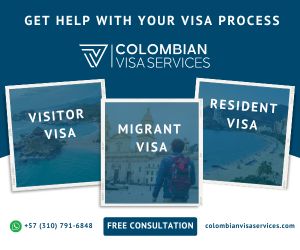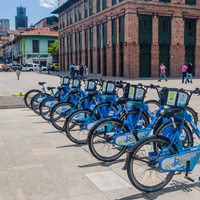Tips for Expats Driving in Villavicencio
Summary: Driving in a new country can be daunting. These tips offer insight into what to expect when driving in Villavicencio.
1. Understanding the Driving Culture
Driving in Villavicencio, like many parts of Colombia, can be a challenging experience for foreigners. The traffic can be heavy, especially during peak hours, and local drivers are known for their aggressive driving style. It's important to be alert and cautious at all times. Also, be aware that road conditions can vary, with some roads being well-maintained while others may be in poor condition.
2. Car Recommendation
Given the varying road conditions, a car with good suspension and durability is recommended. SUVs or 4x4 vehicles are often a good choice, especially if you plan to explore the surrounding rural areas. However, smaller cars may be easier to maneuver in heavy traffic and tight parking spaces.
3. Parking Situation
Finding parking in Villavicencio can be difficult, especially in the city center. Some areas have metered parking, while others require a parking permit. Parking is not overly expensive, but it's advisable to always secure your vehicle in a guarded parking lot for safety reasons.
4. Driving with an International License
Foreigners can drive in Colombia with an international driving permit for up to 180 days. After this period, you will need to obtain a Colombian driver's license. It's important to always carry your passport, driver's license, and vehicle registration when driving.
5. Obtaining a Colombian Driver's License
To get a Colombian driver's license, you will need to pass a written test and a practical driving test. The process involves submitting your documents, including your passport and proof of residence, to the Ministry of Transport. You will also need to undergo a medical examination. It's advisable to take a few driving lessons to familiarize yourself with local driving rules and conditions.
6. Safety Precautions
Always wear your seatbelt and avoid using your phone while driving. Be aware of motorcyclists, as they often weave through traffic. Also, be prepared for unexpected situations like roadblocks or protests, which are not uncommon in Colombia. Always keep your doors locked and windows up, especially at traffic lights, to prevent opportunistic theft.
7. Understanding Road Signs and Signals
While most road signs in Colombia are standard and internationally recognized, it's important to familiarize yourself with local traffic signals and road markings. Some signs may be in Spanish, so learning basic driving-related vocabulary can be helpful.
About the Author
 Betsy Burlingame is the Founder and President of Expat Exchange and is one of the Founders of Digital Nomad Exchange. She launched Expat Exchange in 1997 as her Master's thesis project at NYU. Prior to Expat Exchange, Betsy worked at AT&T in International
and Mass Market Marketing. She graduated from Ohio Wesleyan University
with a BA in International Business and German.
Betsy Burlingame is the Founder and President of Expat Exchange and is one of the Founders of Digital Nomad Exchange. She launched Expat Exchange in 1997 as her Master's thesis project at NYU. Prior to Expat Exchange, Betsy worked at AT&T in International
and Mass Market Marketing. She graduated from Ohio Wesleyan University
with a BA in International Business and German.
Some of Betsy's articles include 12 Best Places to Live in Portugal, 7 Best Places to Live in Panama and 12 Things to Know Before Moving to the Dominican Republic. Betsy loves to travel and spend time with her family. Connect with Betsy on LinkedIn.





